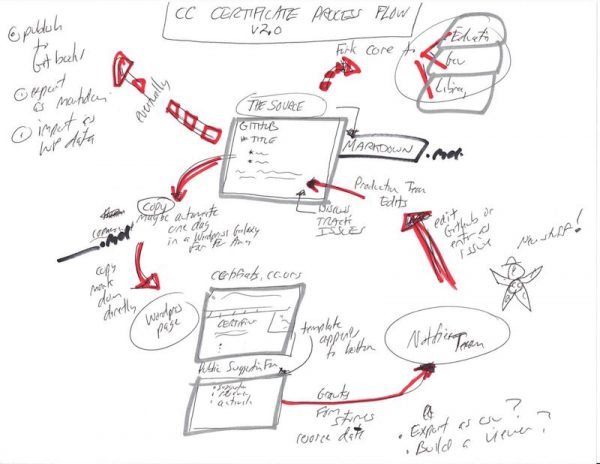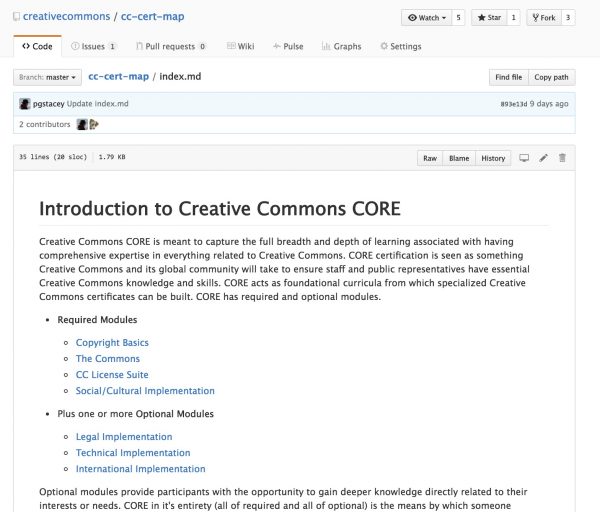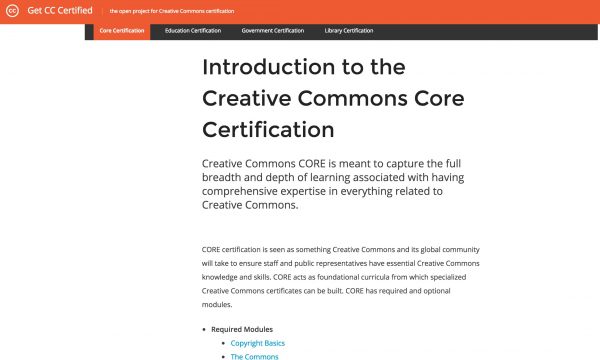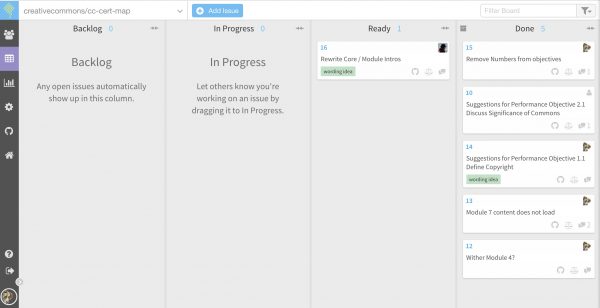The efforts of our Creative Commons Certification design team are aimed at producing a first draft version of a structured outline of what will be included and also to solicit input, ideas, and resources we should include.
We have on the table a “core” portion of Creative Commons understanding that all certificates should cover, plus contexts and possible additions for the three variants on the table (Higher Education, Government and Library), specializations within, and then some expectations of variable modes of delivery (1/2 day to 3 day workshop, in person to online to hybrid). Oh, and eventually this ought to be deployed in an internationally
And we’ve had some discussions about some metaphors for how it might be seen in the world. All of this yells to me that we need to have a framework and structure that is highly flexible, not tied to one platform/system, that we separate as much as possible to structure from the presentation layer.
From the beginning of my involvement in the project, and now, this speaks a lot to me of a Git / GitHub style approach to what we do. That we maintain a “repo” of the Core Certification, that it gets forked for Higher Education, Government and Library, and even forked more as needed. That it can be something people can suggest changes to.
But it’s quite a bit different way of working then most people have done. Fear of Forking is real. And in out work, doing a lot in a shared directory of Google Docs, we are proliferating lots of versions of files, unclear of what is current:
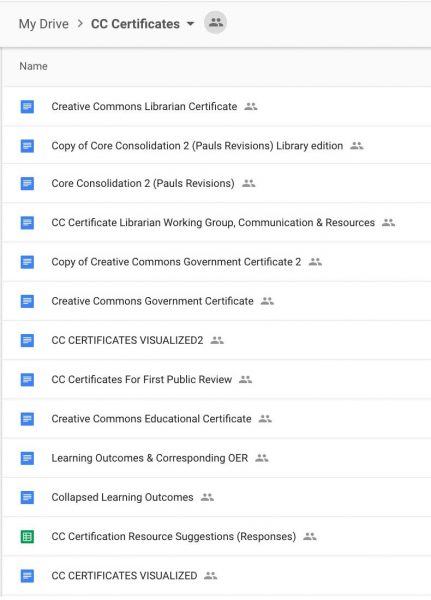
Doc, Doc Docs…
Not that they are not useful, but for a project this potentially large, and complex, I’m hoping we can “think outside of the Docs.”
Having gone through a few iterations of ways this might work, I went back to my sketch paper…
And of course, besides my terrible handwriting, this is hardly meaningful to anyone but me.
My suggestion is the production team on the project move our work out of Google docs, and maintain the “canonical” source of materials in a GitHub repository. All the edits are done, tracked, discussed there. The power of GitHub is the tracking of changes in every file, and a workflow management via the issues system.
The design is not visual, but structural, semantic. it is not how anyone will see a workshop, or a training, but is more like the raw material one might use to create or run a certification project/ It’s not a presentation design per se, and is not tied to any particular publishing platform / system. The content is provided in the simple, form of Markdown.
From a single master source, content can then be easily deployed, customized as:
- A forked GitHub repository, published via GitHub Pages (e.g. maybe via a Jekyll template)
- It could be published online viaGitBooks a less code-like view of the content, in a book-like form, with automatic formats made in PDF, and ePub (see for example Culture and Empire, or see the multilingual capabilities of ones line the Django Girls Tutorial
- Markdown code can be brought directly into WordPress (with the aid of a plugin) and published directly.
We do not see all of certification process happening in a Markdown published site- it would be the content and flow. Most likely there will be some amount of presentation of content (text, links, videos). We foresee people then doing a number of activities or quests they might get from something like a DS106 assignment bank approach where we might have some required tasks/activities done plus optional ones participants might choose, or a trainer might pick, as needed to customize a session for an audience, sector. And then participants would submit, enter their efforts into some kind for credential management system.
So instead of designing an entire comprehensive system, we are creating all the pieces someone might use to build a program, or use ones we offer as a general design.
We are trying this out now, you can see everything at https://github.com/creativecommons/cc-cert-map/ though this sill not be the full public way we share the certification drafts. This is where we will hone the content.
I can see one form as, yes, a document, even a Google document. A high level view to see everything, maybe not full granular detail. The public view we are aiming at is generated by copying the Markdown from our GitHub Repo to this WordPress site. This version of the introduction to the Core Certification from GitHub is rendered nicely in WordPress.
It’s really placeholder for now, but it will get populated out further very soon. And copying Markdown from GitHub to WordPress is not a long term solutions (there is a plugin to explore synchronization between Github and WordPress).
And then in the WordPress side, I have set up a feedback/resource/activity suggestion form that is appended to each section using the Gravity Forms plugin that will allow three different kinds of feedback to be handled, and organized in the back end of WordPress, but a single form. You can see some more details on this in the Wiki documentation I have been writing on GitHub.
There are still cognitive hurdles for our team. GitHub, writing in Markdown. Trying to create a workflow where ideas are fed to the Issues are of GitHub, assigned, updated, and completed. We could show the progress in a public Waffle!
I remain convinced that to make this work for some many different audiences, sectors, modes of delivery, we need to avoid a single design or platform approach, but one modularized in pieces of content that can be flexed into different presentation layers.
Or maybe I just am mesmerized by Rube Goldberg machines.

flickr photo shared by Profound Whatever under a Creative Commons ( BY-NC-SA ) license
Featured image credit: Model of a Turing Machine, reconstructed by Mike Davey as seen at Go Ask ALICE at Harvard University- a Creative Commons CC-BY licensed image from Wikimedia Commons
